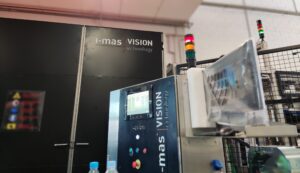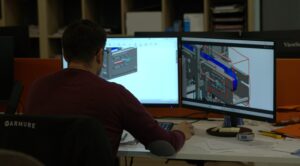Industrial safety is a major concern for companies in sectors such as manufacturing, mining, automotive and energy. Working conditions in these environments are often complex and dangerous, requiring the use of advanced technologies to prevent accidents, improve risk management and ensure the integrity of employees and production processes.
In this context, machine vision emerges as a key tool to transform industrial safety. Through intelligent camera systems and advanced algorithms, VA not only contributes to accident prevention, but also to the early identification of potential hazards, enabling a fast and effective response.
Prevention of occupational accidents: real-time monitoring
One of the greatest benefits of machine vision in the industrial environment is its ability to perform continuous, real-time monitoring of working conditions. Machine vision systems can be designed to monitor the behavior of workers, machinery and facilities, detecting risk situations before they materialize into serious accidents.
For example, in factories or warehouses where heavy machinery is operated or hazardous substances are used, these systems can identify the presence of people in high-risk areas or the lack of personal protective equipment (PPE).
Smart cameras equipped with machine vision can issue immediate alerts if they detect that an operator is not wearing a hard hat, safety glasses or gloves in danger zones. Similarly, they can also identify messy situations that could result in accidents, such as tools or materials out of place or exposed cables that pose a tripping hazard.
Infrastructure and equipment integrity monitoring
Machine vision is not only limited to the surveillance of workers; it also plays a crucial role in the inspection and preventive maintenance of industrial infrastructure and machinery. Machine vision systems can be used to inspect equipment, detect signs of wear or mechanical failure, and ensure that facilities are operating within safety parameters. This is especially valuable in industries where equipment must operate under extreme conditions, such as chemical plants.
Machine vision cameras can monitor key components, such as valves, piping, pressure and temperature systems, looking for wear patterns or malfunctions. Through image analysis, the systems can identify cracks, leaks or corrosion in metal structures before these problems become catastrophic failures.
In this way, machine vision contributes to risk management by enabling a predictive maintenance approach, where repairs can be made before major damage occurs.
The integration of machine vision in i-mas
In the engineering department of i-mas we are specialized in the combination of artificial vision technologies, deep learning and industrial automation in production processes, which allows us to offer integral solutions adapted to the specific needs of each client.
In short, we can say that the integration of machine vision in industrial processes not only improves operational efficiency, but also contributes significantly to improving industrial safety and risk management. Through continuous monitoring, predictive maintenance, detection of hazardous conditions and training, machine vision is presented as an essential tool to prevent accidents, protect workers and minimize operational risks. With its ability to provide real-time solutions, this technology not only prevents incidents, but also enables a faster and more effective response to any eventuality, creating a safer and more efficient work environment.
Want to learn more about our services? Contact us or visit our projects section!



